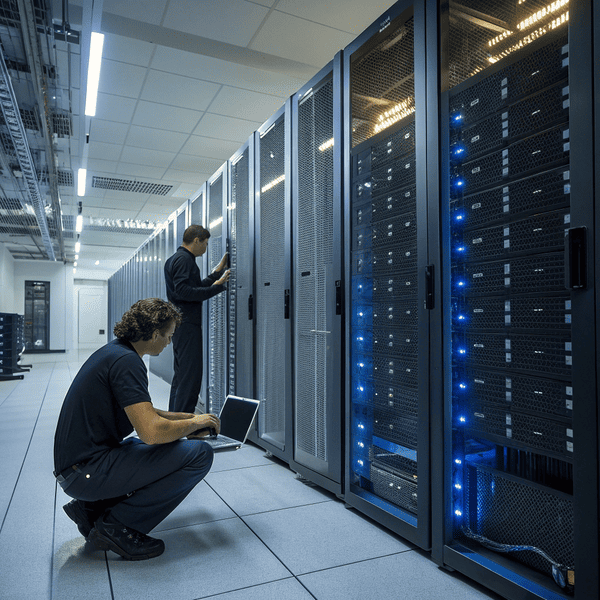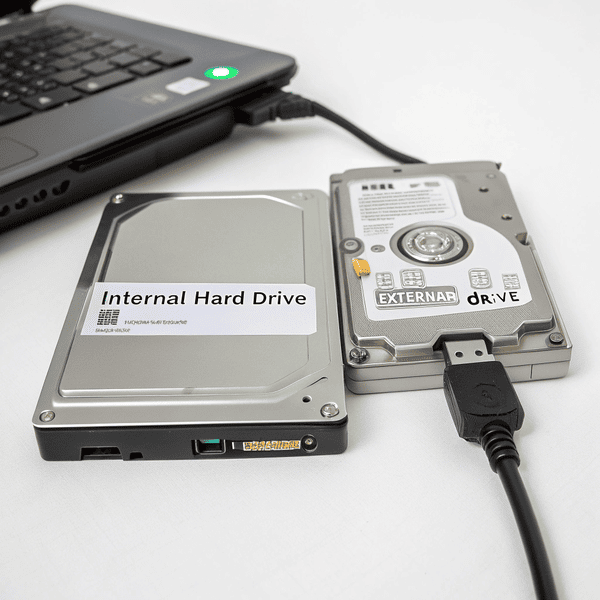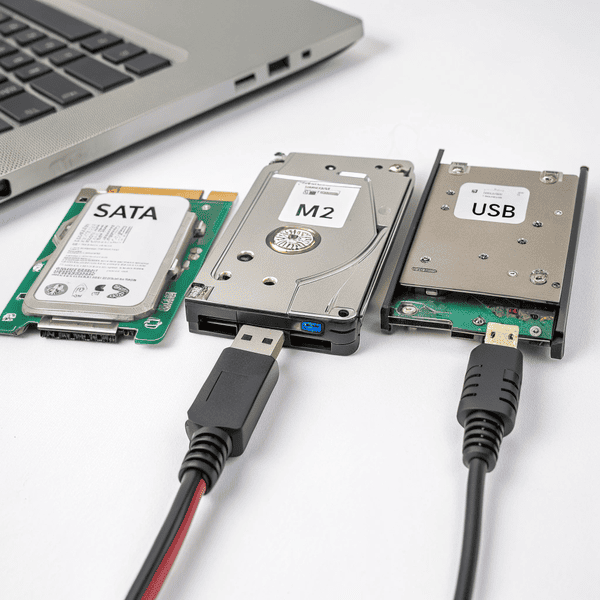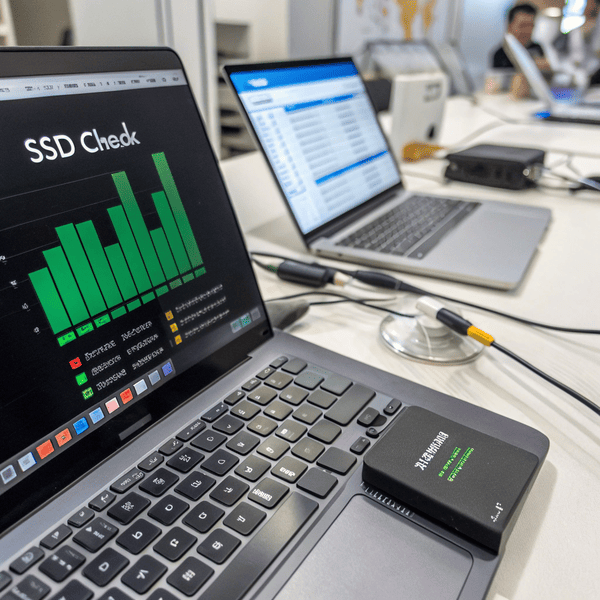Hard drives fail constantly inHard drives fail constantly in data centers[^1], with thousands of drives at risk. I remember reading about Google's data centers experiencing drive failures[^2] daily across their massive infrastructure
[^1]: Exploring this link will provide insights into the challenges and solutions in managing data centers effectively.
[^2]: Understanding the causes of drive failures can help in implementing better strategies for data integrity and reliability.
, with thousands of drives at risk. I remember reading about Google's data centers experiencing drive failures daily across their massive infrastructure.
Data centers manage hard drive failures through RAID redundancy, automated monitoring systems, predictive analytics, hot-swappable drives, and redundant data distribution across multiple locations to ensure continuous operation and prevent data loss.
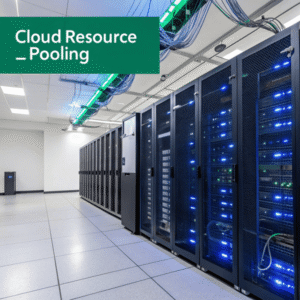
Understanding how data centers handle these inevitable failures helps us appreciate the complex systems keeping our digital world running 24/7.
When a hard drive used in a data center fails, what might happen?
Picture a busy manufacturing plant where one machine breaks down - the entire production line doesn't stop. Data centers face similar challenges with Picture a busy manufacturing plant where one machine breaks down - the entire production line[^1] doesn't stop. Data centers face similar challenges with hardware failures occurring regularly at scale.
[^1]: Exploring optimization strategies can enhance productivity and reduce downtime in manufacturing processes.
occurring regularly at scale.
Hard drive failures in data centers can range from minor service disruptions to complete server outages, depending on redundancy systems, with potential data loss, performance degradation, and the need for immediate replacement to maintain system integrity.
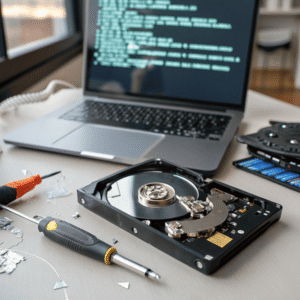
Types of Hard Drive Failures
Data centers experience different severity levels when drives fail [3]:
| Failure Type | Impact | Recovery Time |
|---|---|---|
| Gradual Failure | System slowdown, corrupted data | Hours to days |
| Catastrophic Failure | Complete drive undetectable, total data loss | Minutes to hours |
| Head Crash | Severe data loss, potential contamination | Days to weeks |
Immediate Consequences
When a hard drive fails in a data center, several things happen simultaneously. [4][10] The system typically experiencesThe system typically experiences data access delays as the storage controller[^1] attempts multiple read operations before marking sectors as bad
[^1]: Exploring how storage controllers work can provide insights into improving data management and reliability in storage systems.
as the storage controller attempts multiple read operations before marking sectors as bad [4]. In catastrophic cases, the drive becomes completely undetectable by the system BIOS, requiring immediate replacement [4].
Business operations can continue if proper redundancy is in place, but without adequate backups, data recovery becomes extremely expensive - often costing hundreds or thousands of dollars [1][26]. The failure also triggers automated alerts to data center teams who must respond quickly to prevent cascading failures.
Environmental and Physical Factors
Environmental conditions significantly affect failure rates. [1][4] Most drive failures occur due to humidity, temperature extremes, vibration, and contamination [1][18]. Data centers implement strict environmental controls including temperature management, clean air systems, and vibration isolation under server racks [4][5].
Which characteristic of cloud computing allows data centers to better manage hard drive failures?
Think about how a smart factory can instantly reroute production when one machine fails - cloud computing brings similar flexibility to data centers through intelligent resource management.
Resource pooling is the cloud computing characteristic that enables data centers to better manage hard drive failures by dynamically distributing computing resources across multiple physical devices, creating redundancy and allowing seamless failover when individual drives fail.

How Resource Pooling Works
Resource pooling works by combining computing, storage, and networking resources from multiple physical servers into virtual pools [5]. When a hard drive fails, the system automatically redirects operations to healthy drives within the same resource pool, minimizing downtime and maintaining service availability.
This pooling approach allows data centers to treat individual hardware components as expendable parts of a larger system. Instead of relying on any single drive, data is distributed across hundreds or thousands of drives, making individual failures manageable rather than catastrophic.
Additional Cloud Characteristics Supporting Failure Management
While resource pooling is the primary characteristic, other cloud features contribute to failure management. Rapid elasticity allows systems to quickly scale resources when drives fail, automatically provisioning replacement capacity. On-demand self-service enables automated replacement and scaling without human intervention.
The combination of these characteristics creates a self-healing infrastructure where drive failures become routine maintenance events rather than emergency situations. Major cloud providers like Google, AWS, and Azure handle thousands of drive failures daily using these principles [2][11].
Do data centers still use hard drives?
Despite predictions about the death of hard drives, I've learned that data centers continue relying heavily on traditional storage technology for specific use cases and economic reasons.
Yes, data centers extensively use hard drives, with HDDs storing over 80% of data in cloud and hyperscale facilities through 2028, primarily for cost-effective bulk storage, backup, archival, and cold data applications.
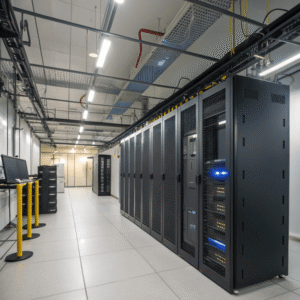
Current Hard Drive Usage Statistics
According to industry analysts, hard drives remain dominant in data center storage. [7][8] Over 90% of exabytes in cloud data centers are stored on hard drives, with only about 10% on SSDs [9]. The hard drive industry shipped over 1 zettabyte (ZB) of storage capacity in just the last year, demonstrating continued strong demand [9].
IDC forecasts show HDDs will continue making up almost 80% of storage used in hyperscale and cloud data centers through 2028 [7]. This persistence occurs despite significant improvements in SSD technology and declining flash storage costs.
Why Data Centers Keep Using Hard Drives
The primary reason data centers continue using hard drives is economics. [8][10] Enterprise SSDs cost up to eight times more per terabyte than enterprise HDDs and will remain at levels above five times more expensive for the next five years [7]. For bulk storage applications, this cost difference makes hard drives the obvious choice.
Storage Hierarchy in Modern Data Centers:
| Storage Type | Use Case | Cost per TB | Access Speed |
|---|---|---|---|
| Enterprise SSD | Hot data, high performance | High (8x HDD) | Very fast |
| Enterprise HDD | Warm/cold data, backup | Low (1x baseline) | Standard |
| Archive HDD | Long-term storage | Very low | Slow |
The AI Data Cycle Drives HDD Demand
Contrary to expectations that AI would eliminate hard drives, AI applications actually increase Contrary to expectations that AI would eliminate hard drives, AI applications[^1] actually increase HDD demand
[^1]: Exploring this link will reveal the connection between AI advancements and storage requirements, crucial for tech enthusiasts.
[7]. The AI data cycle requires massive storage for raw datasets, training data, and generated content. While AI processing uses high-speed SSDs for active computation, the vast amounts of training data and generated output are stored cost-effectively on hard drives.
Large language models and machine learning algorithms consume huge volumes of data during training, then generate even more content that must be stored. This continuous cycle of data creation and consumption drives the need for scalable, cost-effective storage solutions that hard drives provide better than any alternative technology.
Conclusion
Data centers manage hard drive failures through sophisticated redundancy systems, resource pooling, and automated monitoring, ensuring reliable service despite inevitable hardware failures.

